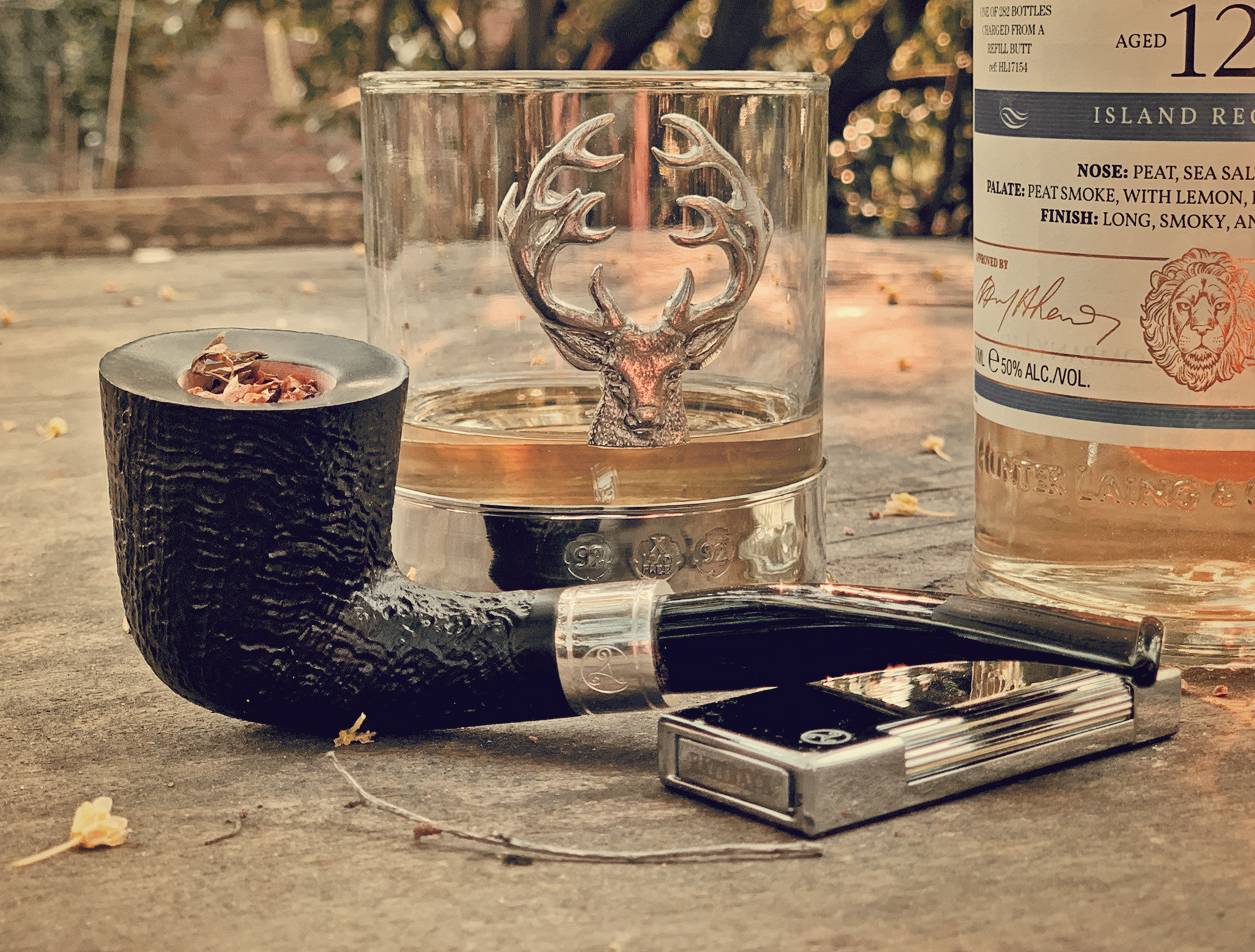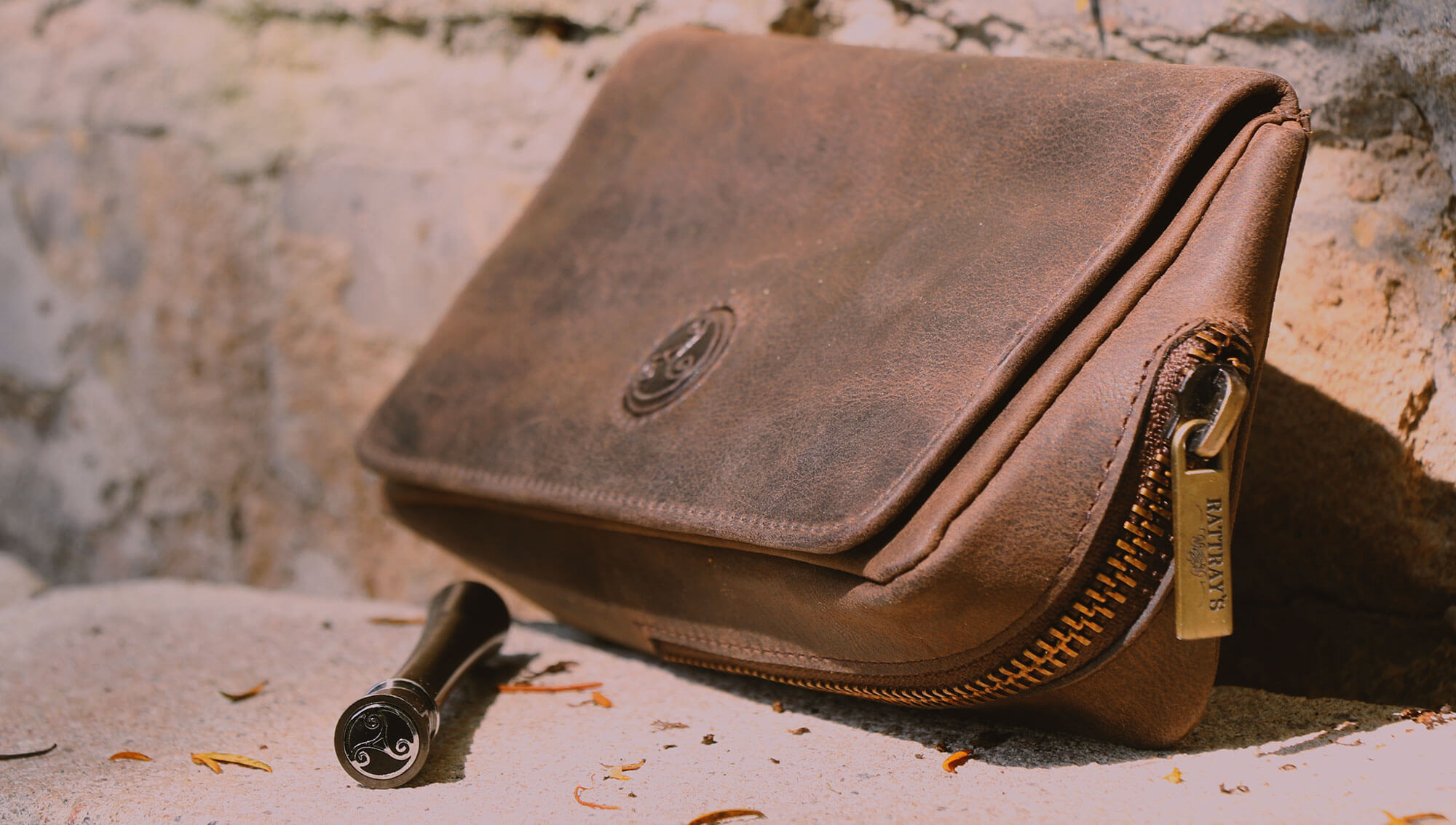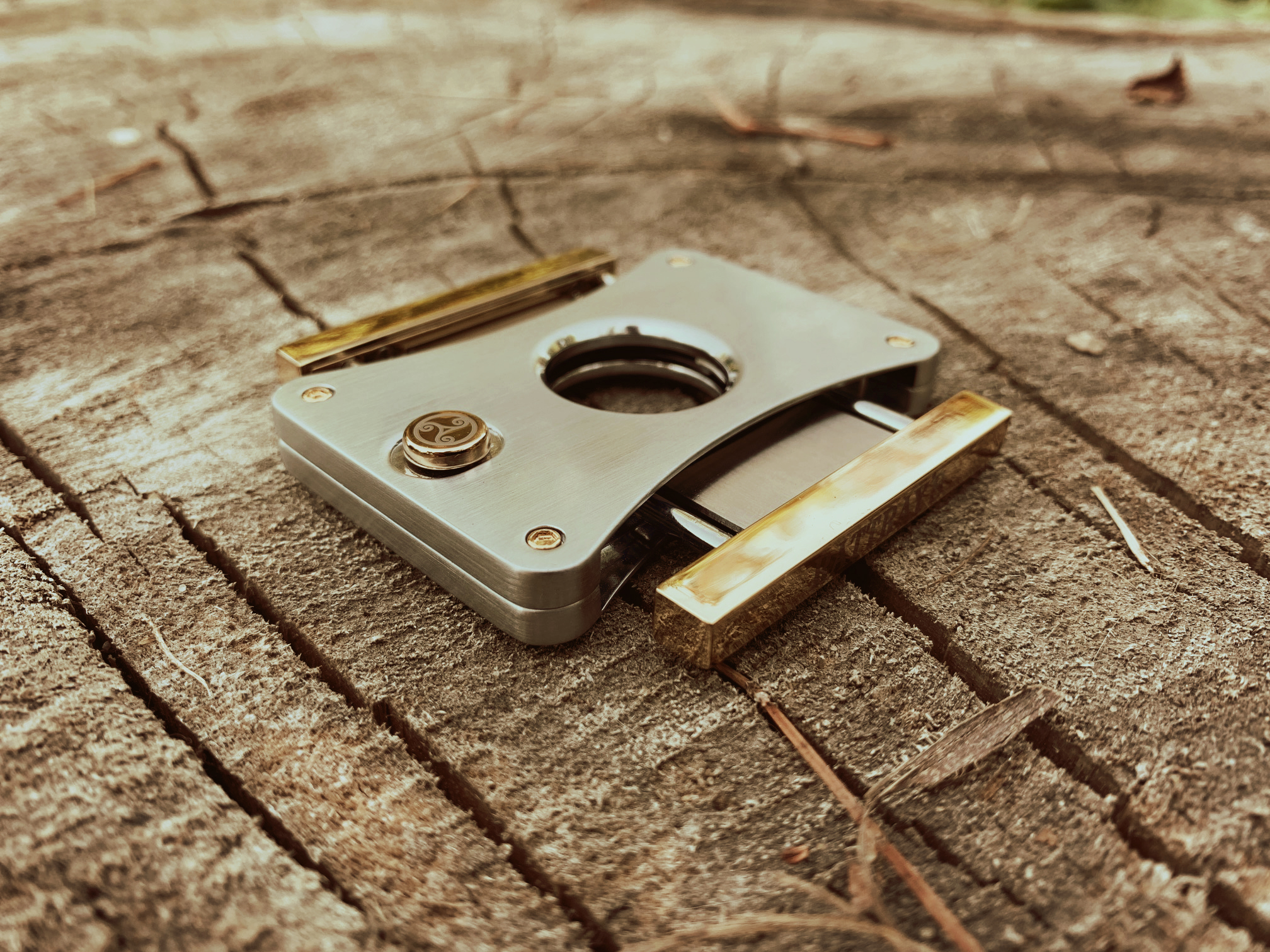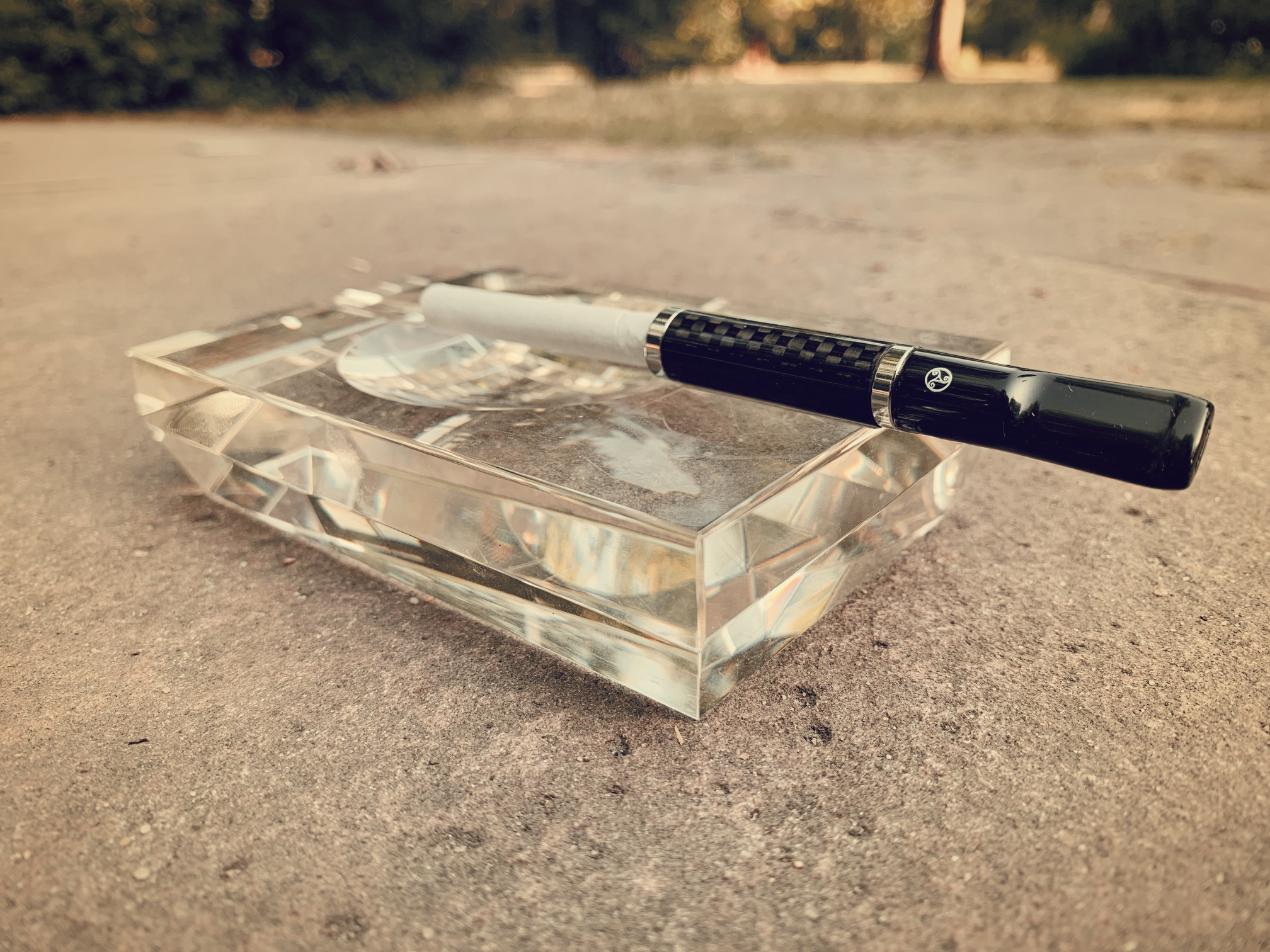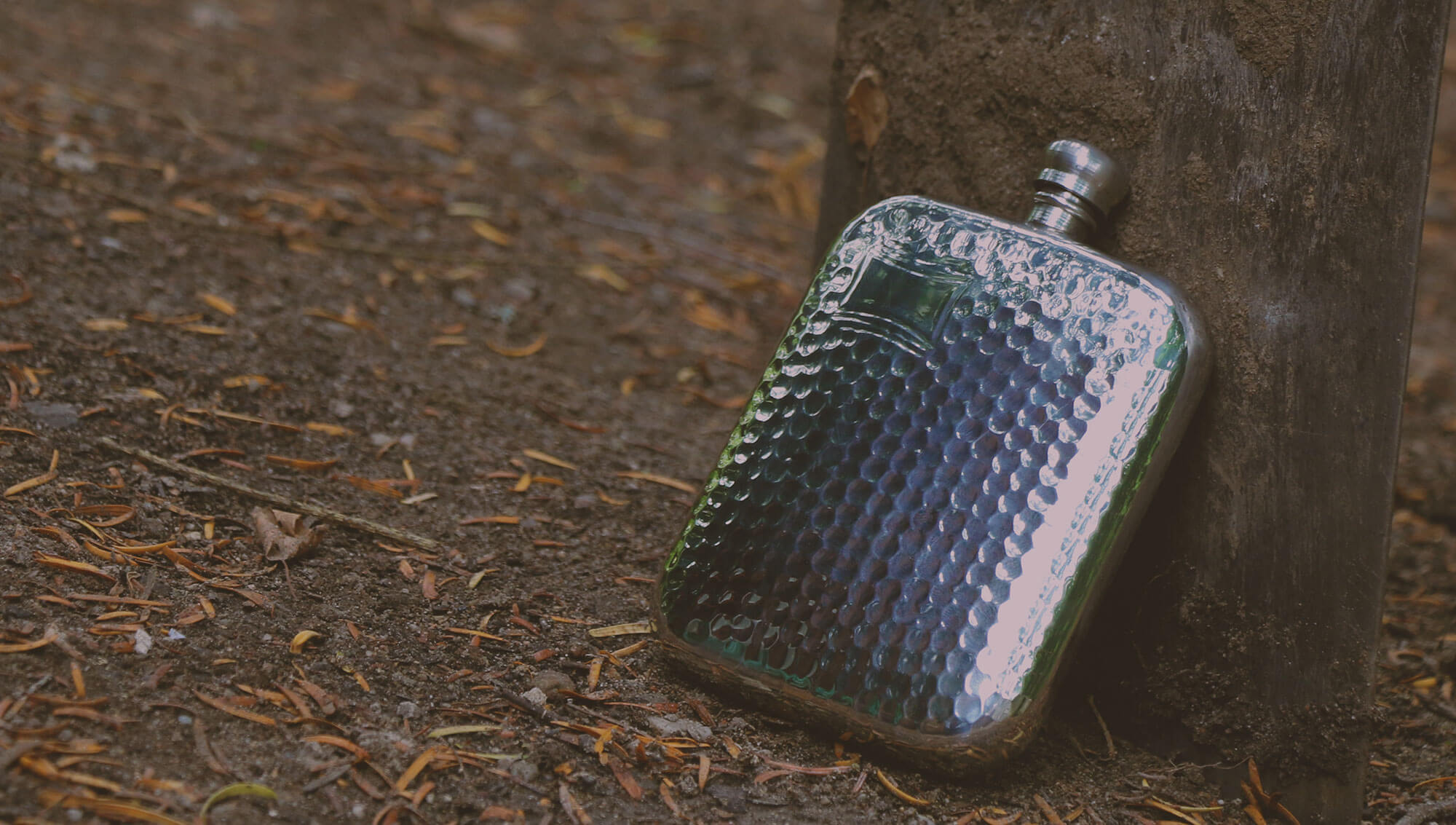08/01/2022
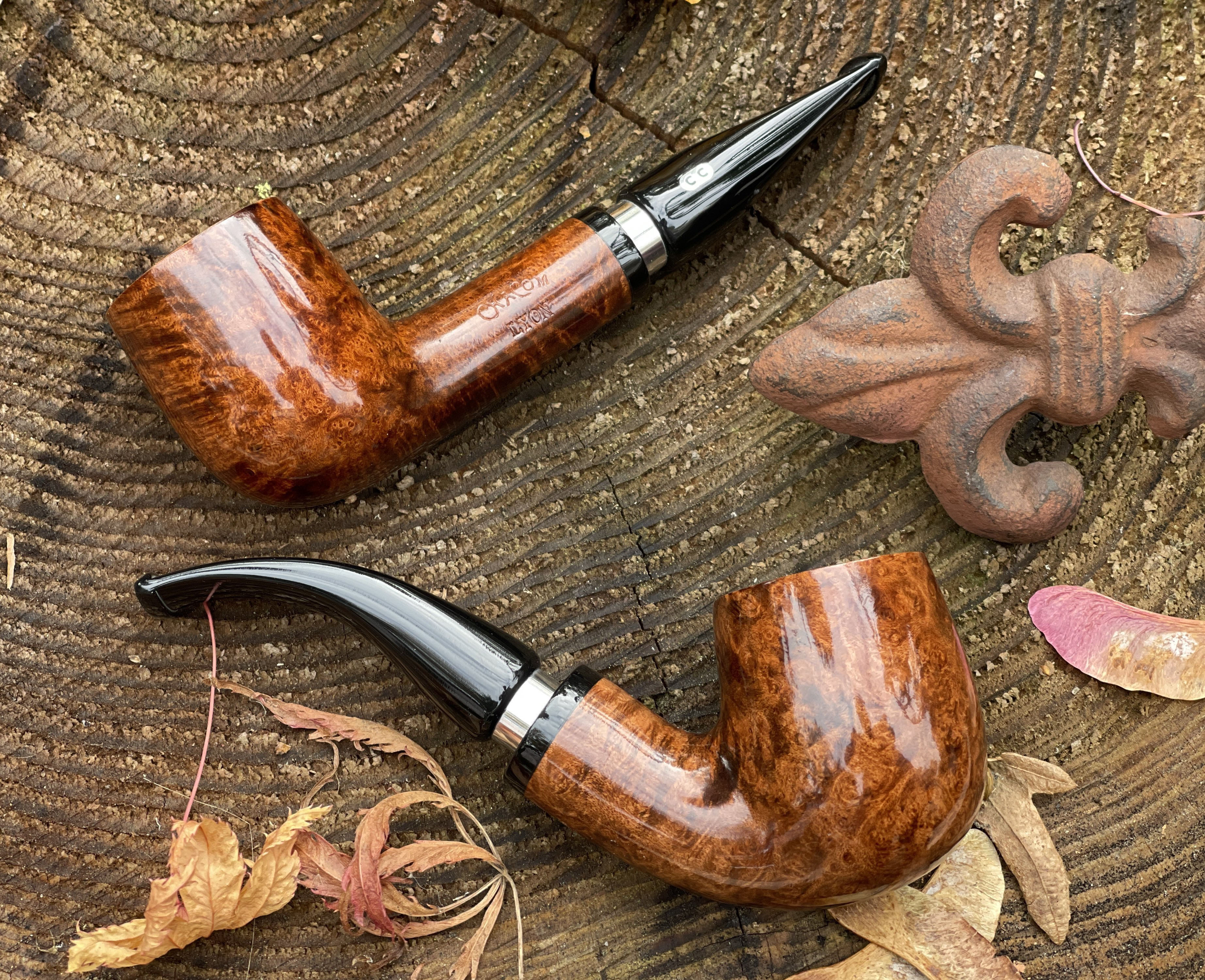
How to smoke a pipe
Fill the tobacco chamber to the top. The first third lightly, the middle third with a bit more pressure and the last third with strong pressure. Light the tobacco with circular movements. Draw at the mouth piece softly, so the flame can advance to the lower tobacco layers.
Burning tobacco emits moisture and causes loss of contact to the lower tobacco layers; the flame can no longer wander down. To counteract this, press the top tobacco layer down gently. Repeat this process until you manage to produce a steady ember in the middle tobacco layer. If only the top tobacco layer is burning, your pipe will keep going out. If the draw is too tight, then the tobacco is packed too densely. Loosen it up with the pick on your pipe tool.
You regulate the ember with your draw. Draw slowly and gently. You shouldn’t inhale. Taste the smoke for a few seconds and experience all the different aromas. You do not smoke a pipe for the nicotine.
If you draw too heavily, the ember will become too hot and wander in the direction of the blowhole. This is the part of the pipe that experiences the most wear.
With a soft draw the pipe will be your companion for many years to come. If you draw too strongly or too frequently, you will soon not only inhale tobacco, but also wood. This will taste and smell badly. It will also soon be visible: you will see cracks, even holes in the bowl if you continue to mistreat your pipe. Manufacturers do not compensate for this so-called “burnout.” If the pipe gets too hot, put it aside immediately. If you see cracks or craters the pipe can usually be repaired by a specialist at this early stage of a burnout.
Don’t worry about smoking every last crumb of tobacco. The bottom-most tobacco will be soaked with tar and condensation; the taste may be bitter and charred. After smoking, let your pipe rest for a day. It will need time to dry. For a perfect flavor experience, clean your pipe after every use with a cotton cleaner and change your filter. Also remove all the ash from the bottom of the pipe. With prolonged use the tobacco will build up a charcoal crust in the tobacco chamber. A thickness of 1-2 mm is explicitly desired. It will protect the wood from the extreme stress it is exposed to during smoking.
Enjoy your pipe! If you have any further questions, contact your local tobacco dealer.

